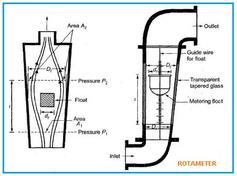Vortex Flowmeter: Advantages and Disadvantages
Advertisement
This article explores the pros and cons of using a vortex flowmeter. We’ll delve into how it works and then weigh its benefits against its drawbacks.
How Vortex Flowmeters Work
A vortex flowmeter operates by placing an obstruction, at a right angle to the fluid flow, inside the pipe. As the fluid passes this obstruction, vortices (swirling patterns) are shed from the sides of the meter’s body. The frequency at which these vortices are shed is directly proportional to the velocity of the fluid.

The relationship between the vortex shedding frequency (St) and the fluid velocity (U) is described by the following formula:
St = (f x d) / U
Where:
- f = Vortex shedding frequency
- d = Width of the shedding body
- U = Fluid velocity
Vortex flowmeters typically have the following features:
- Design Pressure: Up to 138 Bars
- Design Temperature: Ranging from -200°C to 400°C
- Pipe Sizes: Suitable for pipes from 15 mm to 300 mm (1/2 inch to 12 inches)
- Fluid Types: Works with both clean and dirty gases, as well as clean liquids.
Advantages of Vortex Flowmeters
Here’s a look at the benefits of using a vortex flowmeter:
- High Accuracy: Vortex flowmeters offer excellent accuracy, typically around 1% or better.
- Wide Range: They can handle a broad range of flow rates.
- Simple Construction: The design is straightforward, which can contribute to reliability and ease of maintenance.
- Versatile: Suitable for both liquids and gases.
- Simplified Installation: They don’t require complex pressure impulse lines, making installation easier.
- Wear Resistant: They are less sensitive to wear compared to some other flowmeter types.
- No Density Compensation Needed: Volumetric flow measurement does not require compensation for fluid density changes.
Disadvantages of Vortex Flowmeters
Despite their benefits, vortex flowmeters have some limitations:
- Low Flow Rate Issues: At very low flow rates, the meter may not generate enough pulses to register accurately, leading to low or even zero readings.
- Vibration Sensitivity: Vibrations can interfere with the meter’s accuracy and lead to errors.
Advertisement
 T&M
T&M 



